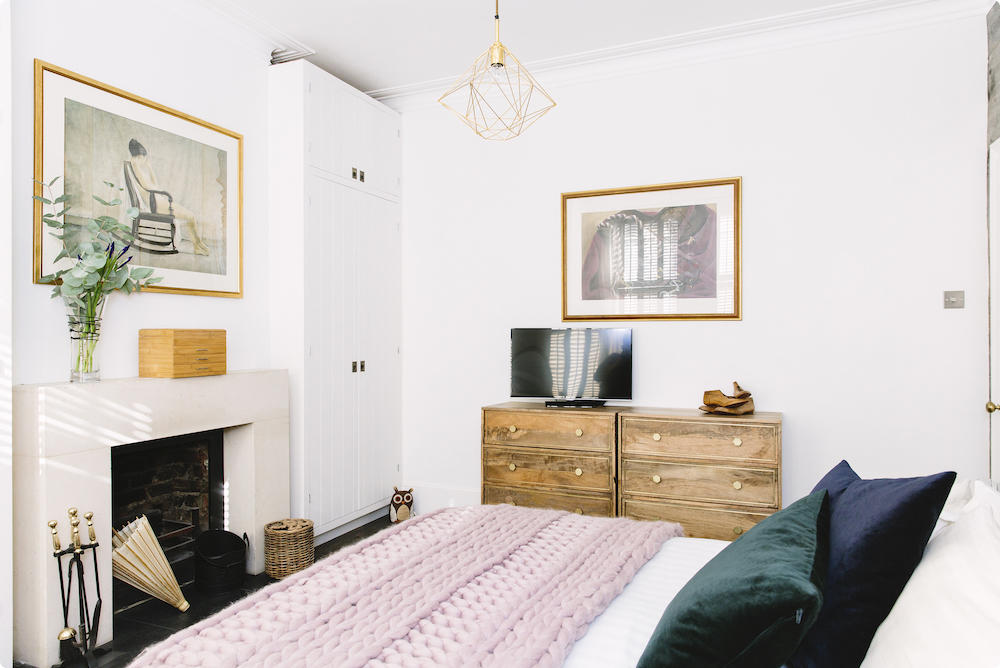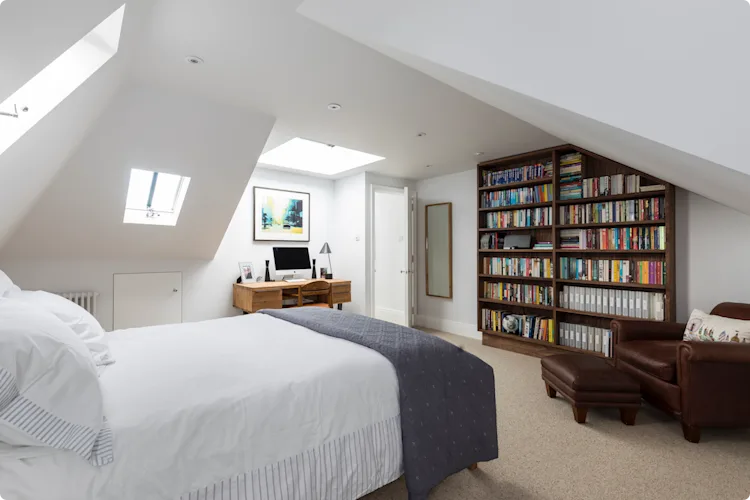In this sense, creating a relaxed home is less about singling out this quality and looking into how the other qualities we value are feeding into this. Relaxed homes need to nourish, adapt to our needs, and be secure - and vice versa! Don’t forget, all the Happy Home qualities rely on each other to provide the best space for you.
However, if you’ve nailed those traits already, there are some design considerations you can throw in on top. Check out these tips from our top architects…
Design choices big and small
As architects, it’s often our job to remind homeowners there’s more to a great space than just interior design. However, when it comes to relaxation, how you decorate your space can play a big part in creating a stress-free environment. For example, the use of colour and incorporation of nature have all been shown to help us relax and reduce stress.
That’s not to say design doesn’t also play a major role. The acoustics of your home has a surprising impact on your stress levels, as does your chosen layout. So what design choices should you be making for a relaxed abode?

Creating your own personal oasis of calm...
As we mentioned, colour plays a big part in how relaxing we find our home. Most interior designers will advise you to go for a subtle colour scheme if relaxation is the goal. Bright colour often makes your mind more active, while intense shades of red and orange have been suggested to give people headaches.
Light and softer shades allow your room to breath while making the most of natural light, the presence of which has shown to be a mood elevator. Unsure which colour is right for you? Try painting swatches on the wall to get an idea of the effect your chosen colour will have on the light in your room.
Speaking of light, make sure the lighting fixtures you choose are a help, not a hindrance. Warm, soft lighting will help promote a better night’s sleep, while those with blue undertones or bright white, will only keep you awake for longer. For those rooms with little daylight, purchase ‘biodynamic’ lights which will help with your natural body clock.
Another simple calming trick is symmetry. Creating a mirror effect with your furnishings can help create the feeling of harmony in the room and can be achieved by simply mirroring your picture frame placement on walls, or even just adding opposing mirrors which can also help bounce more natural light into your space.
When you’re short on space, for example in tight hallways or box rooms, you can use mirrors to provide a sense of a larger and more habitable space to help make you feel more comfortable.
Plants, plants and more plants! Getting more natural features into your home will not only provide a pleasing visual but can also help with air quality. If possible, we also recommend creating clear views of any scenic horizons you might be blessed with. Be this your own garden or the surrounding countryside. Open-plan layouts can help achieve this, especially when combined with large glazed features, such as sliding or bi-folds doors.
Space to switch off
Our data shows that living spaces and bedrooms are the most important spaces for us to switch off and relax. 46% of us say that we switch off best in our living spaces and 36% in our bedrooms. This is interesting because many people see their bedrooms as merely a place to sleep, but the findings show it could have a potential for more - something that might be tied into the adaptability quality of our homes.
If your bedroom or living room aren’t living up to their potential, try combining these ideas with those we’ve listed above.

Maximising your key relaxation areas…
Create wall nooks for work, reading and those quiet moments. Making use of unused wall or corner spaces removes the need to design specific rooms to accommodate these functions. This gives you a pocket space to work or study from home, which also has the flexibility to be personalised for different uses in the future.
If your bedroom is your personal haven, make sure you’re not compromising on your sleep to spend time there. Spend too much on your bed and it can easily lose its association with a good night’s rest. To avoid this, consider splitting your space up. Even small bedrooms might have room for a reading chair. Even a comfy rug can provide a place to sit and meditate!
Remember: it’s called a living room, not a ‘watch TV room’. Make sure your living room is adaptable to a whole range of activities by prioritising moveable furniture. Lightweight coffee tables and seats can then easily be moved out of the way, should you fancy a bit of yoga or the kids want to take a game of tag to the next level.
In both rooms, you should be aiming for an all-round sensory experience. Expand beyond simple colour palettes into textures too. Perhaps natural materials (wood, for instance) or soft fabrics (who doesn’t love a throw or cushion?). You’d also be surprised by what a difference scent can make. Look into aromatherapy candles or a diffuser, especially in the bedroom, where scents like lavender can help us switch off at the end of the day.
Lastly, on a practical level, make sure you’ve got enough storage. Nothing generates stress like clutter, so priorities storage solutions throughout your home. If you want to get clever, you might look at building nooks into your walls or even transforming your stairs.
Learn more about storage ideas.
Summary…
If the focus is on creating happy homes, we must create spaces where we can relax. Our research showed that those who describe their home as relaxed are more likely to report higher home satisfaction than any other home personality trait (including private, sociable, organised and balanced).
Creating this relaxed environment depends on a number of other qualities, such as whether your home can adapt, be secure, nourish, and mirror of personalities. However, far from feeling put off from all these contributing factors, homeowners simply have plenty of ways to go about adding more relaxation into their space. It can be achieved through projects like a layout change or even through simple interior design finishes. Meaning a little slice of calm is open to us all.
Want to get unlock your home’s potential? It’s time to talk to our experts. Simply book a free consultation and Resi will find the happiness in your space.







